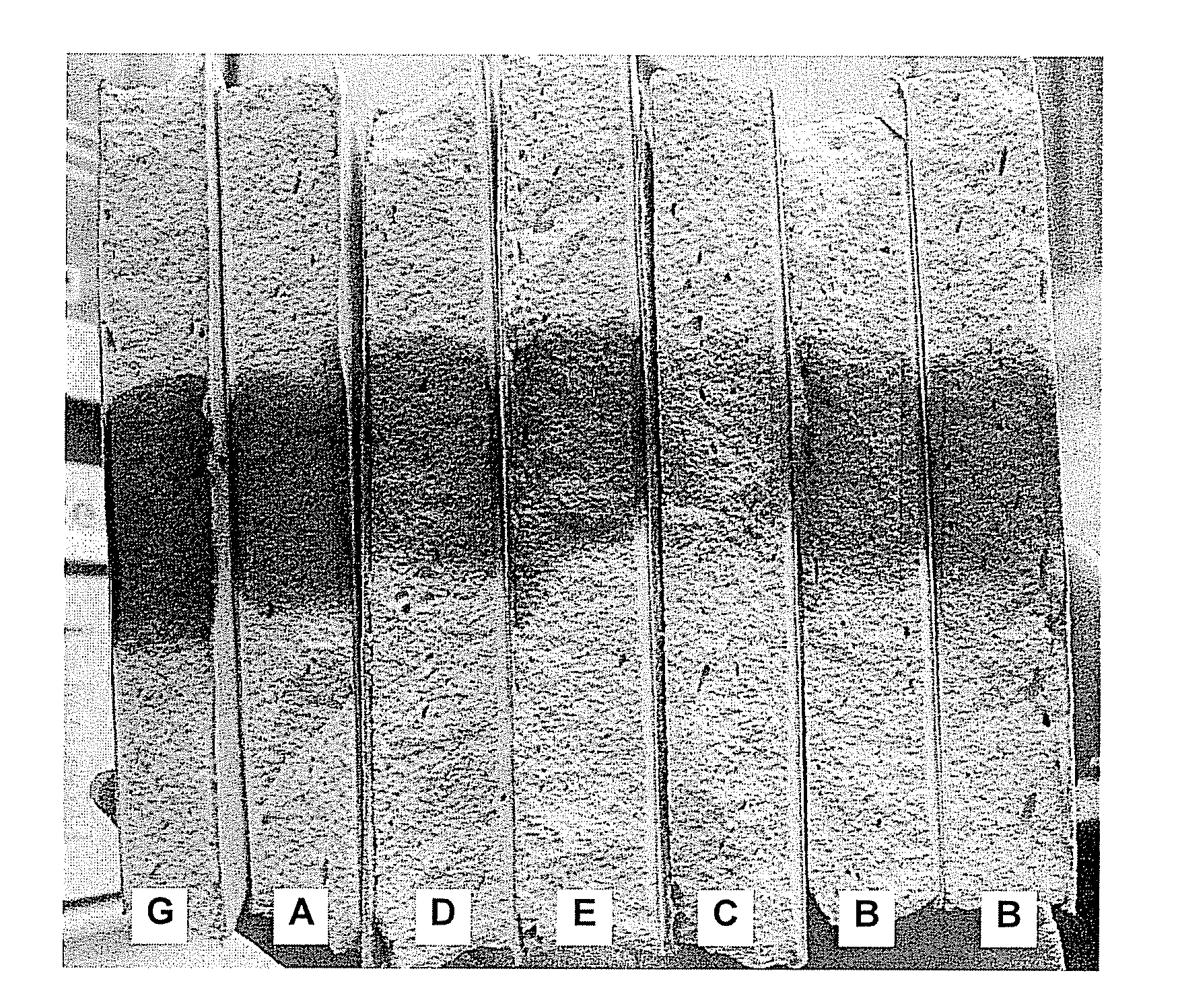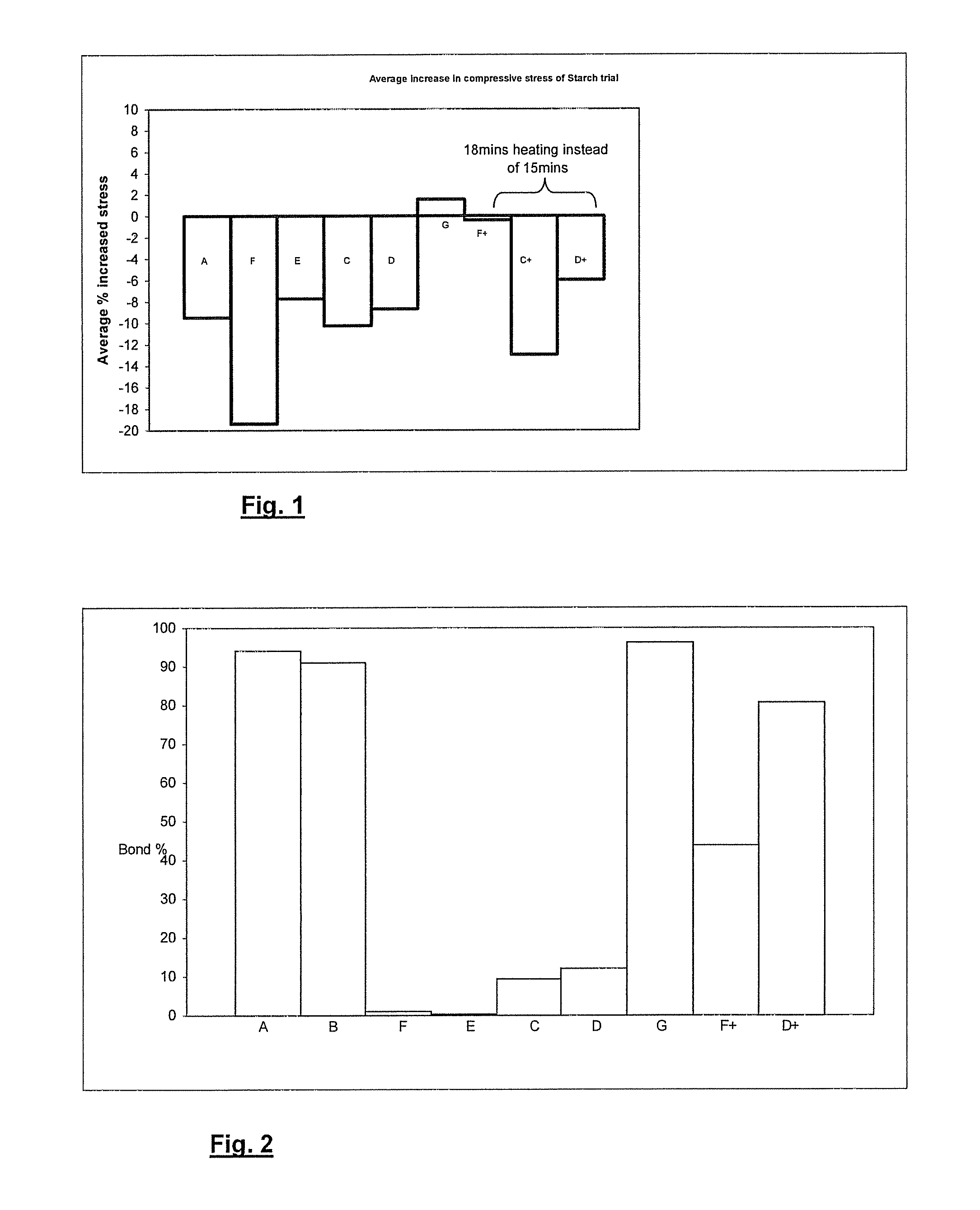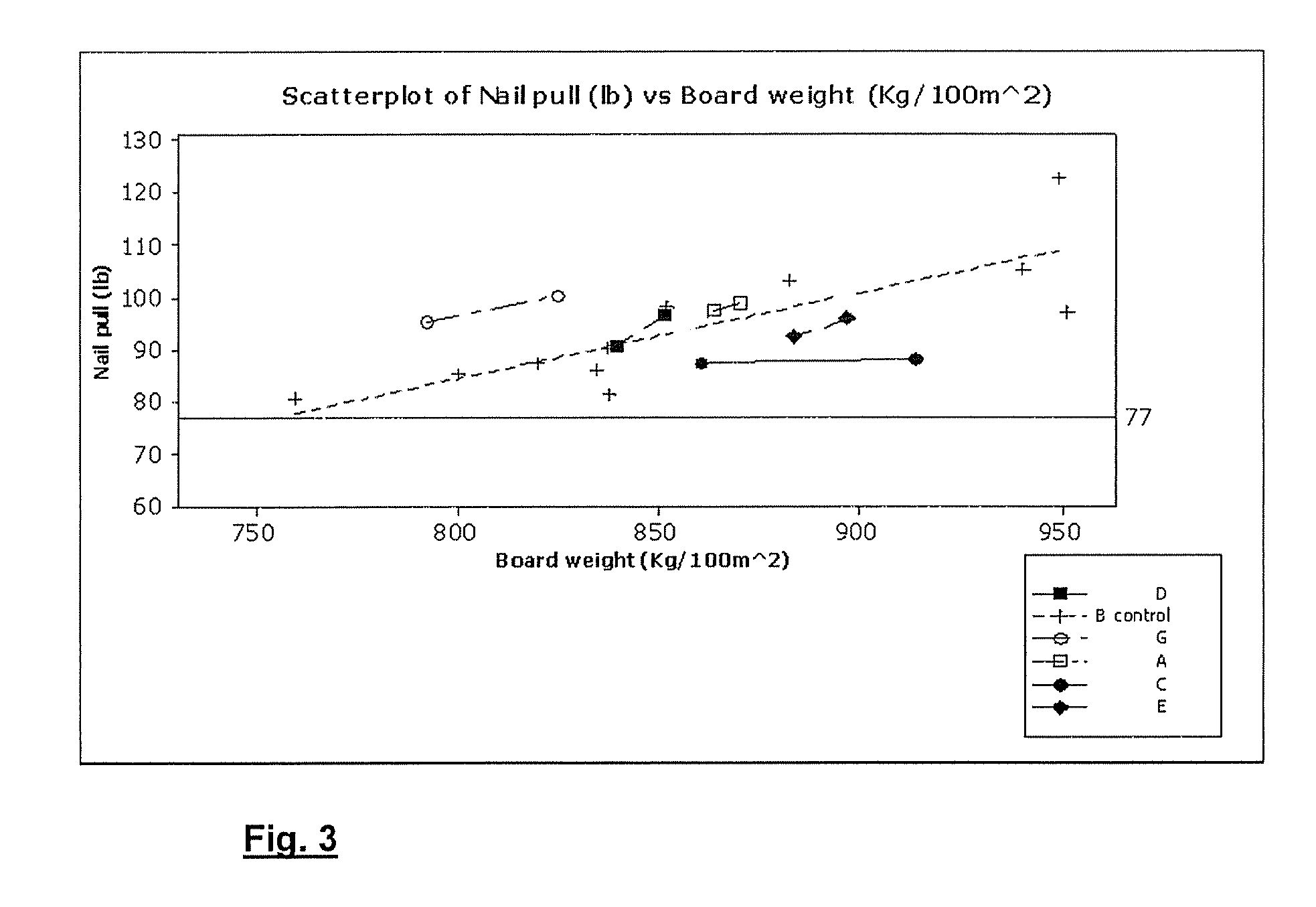Gypsum based panel and method for making gypsum based panel
a technology of gypsum and gypsum, which is applied in the field of gypsum based panels, can solve the problems of unsuitable core strength, unsuitable plasterboard structure, and formulation exemplified in u.s. pat. no. 6, and achieve the effects of high volume, high efficiency of manufacturing process, and low cost of starting materials
- Summary
- Abstract
- Description
- Claims
- Application Information
AI Technical Summary
Benefits of technology
Problems solved by technology
Method used
Image
Examples
examples
[0073]The effects of various starches on the properties of plasterboard were investigated. In particular, the efficacy of the starches as core reinforcing agents was investigated. Nail pull resistance (according to the standard ASTM C473-03 testing procedure) and compressive strength were measured.
[0074]Additionally, the effect on paper-core bond strength was measured. The starches used were:[0075]A Native corn starch—RC03408 (Cerestar Cargill)[0076]B Acid thinned corn starch (control)—Collofilm 120 (Tate and Lyle)[0077]C Native potato starch—C*30002 (Cerestar Cargill)[0078]D Waxy phosphate corn starch—C*06300 (Cerestar Cargill)[0079]E Native waxy corn starch—C*04201 (Cerestar Cargill)[0080]F High amylose starch—C*03003 (Cerestar Cargill)[0081]G Thermally Modified Dextrin—C*Film 07311 (Cerestar Cargill)
[0082]Waxy phosphate corn starch and native waxy corn starch have a high amylopectin fraction. As the name suggests, high amylose starch has a high amylose fraction.
Compressive Streng...
PUM
| Property | Measurement | Unit |
|---|---|---|
| Fraction | aaaaa | aaaaa |
| Fraction | aaaaa | aaaaa |
| Fraction | aaaaa | aaaaa |
Abstract
Description
Claims
Application Information
 Login to View More
Login to View More - R&D
- Intellectual Property
- Life Sciences
- Materials
- Tech Scout
- Unparalleled Data Quality
- Higher Quality Content
- 60% Fewer Hallucinations
Browse by: Latest US Patents, China's latest patents, Technical Efficacy Thesaurus, Application Domain, Technology Topic, Popular Technical Reports.
© 2025 PatSnap. All rights reserved.Legal|Privacy policy|Modern Slavery Act Transparency Statement|Sitemap|About US| Contact US: help@patsnap.com



